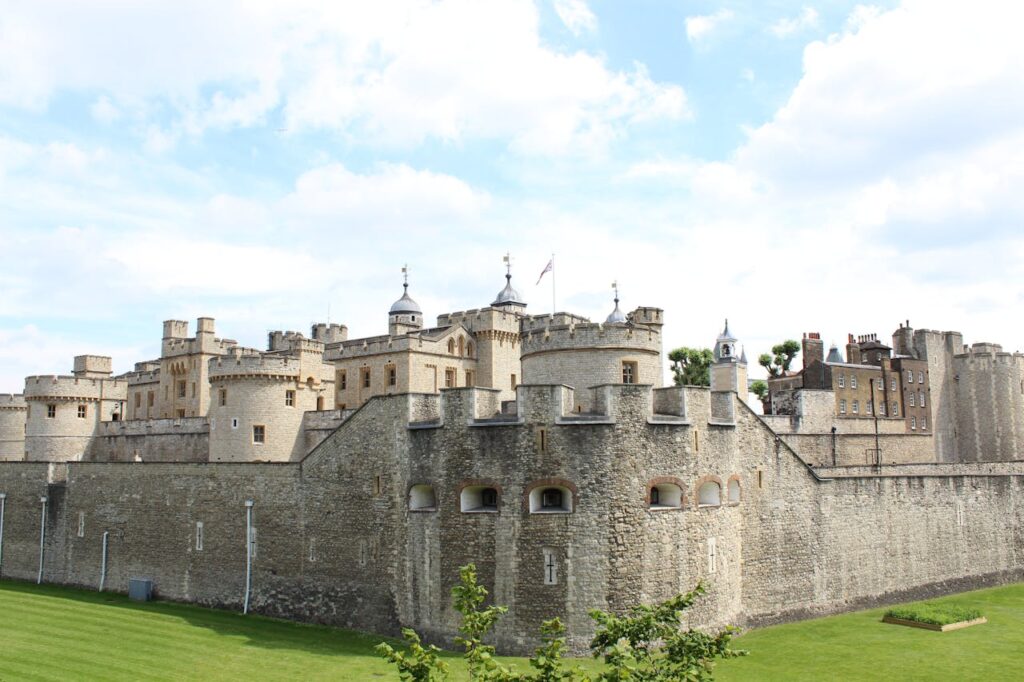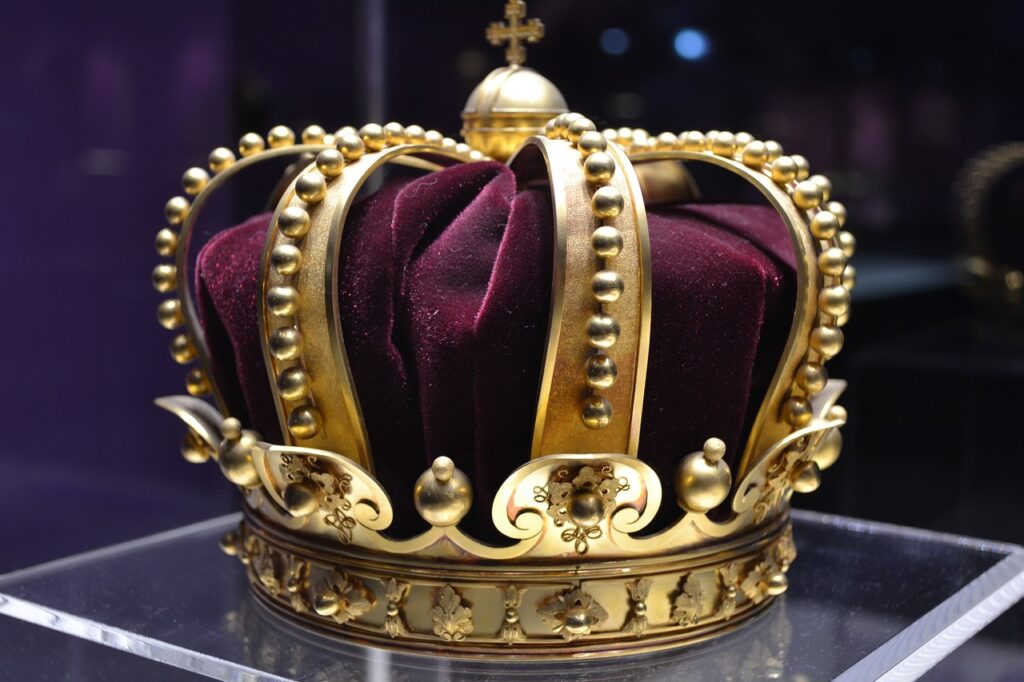
The Tower of London Fortress of Intrigue and Power.
Rising ominously on the northern bank of the River Thames, the Tower of London stands as a testament to England’s turbulent and fascinating history.
Its tall stone walls and imposing turrets cast shadows that have witnessed centuries of intrigue, betrayal, and power struggles.
For nearly 1,000 years, the Tower has served variously as a royal residence, fortress, prison, and even zoo.
Today, it draws visitors from around the globe, eager to uncover its many layers of history.
Yet, while it is now a major tourist attraction, the Tower of London remains a symbol of the authority and resilience of the British monarchy.
The Tower of London Origins
The Norman Conquest and William the Conqueror
The Tower of London was born from a moment of conquest.
After his victory at the Battle of Hastings in 1066, William the Conqueror sought to solidify his grip on England by constructing a series of fortresses across the country.
The White Tower, which gives the entire complex its name, was the first part of the Tower of London to be built in the late 11th century.
Its stone walls and rectangular shape were revolutionary for their time, symbolizing Norman power over the Anglo-Saxons.
William’s vision was not just to defend his realm but to impose his dominance on the capital, and the Tower has stood ever since as a reminder of that conquest.

Architectural Evolution
From Defensive Stronghold to Royal Palace
Over the centuries, the Tower expanded beyond the White Tower, transforming from a purely defensive structure into a complex that housed royalty, military garrisons, and political prisoners.
Successive monarchs added new buildings, walls, and gates, reflecting the evolving needs of the kingdom.
By the 13th century, the Tower had become a royal palace, with luxurious chambers for monarchs and their courts.
However, it always retained its military edge—its location on the River Thames made it a strategic point to guard against invaders.
The blend of grandeur and defence is what makes the Tower unique, as it straddles the line between fortress and palace.
The Tower of London as a Prison
Infamous Inmates and Dark Secrets
The Tower of London’s most infamous role, however, was as a prison. For centuries, it held some of England’s most notable—and notorious—prisoners.
From political dissidents to traitors and members of the royal family, the Tower has seen countless lives broken within its walls.
Among the most famous prisoners were Anne Boleyn, the second wife of Henry VIII, and Lady Jane Grey, the “Nine Days’ Queen.” Both met their end on the Tower Green, where public executions took place.
The phrase “sent to the Tower” became synonymous with doom, as those who were incarcerated often faced a grim fate.
The dark, cramped cells of the Tower still echo with their stories, shrouded in secrecy and tragedy.
The Royal Menagerie
Exotic Animals Within the Tower Walls
Perhaps one of the more curious chapters in the Tower’s history is its time as a royal menagerie.
For several centuries, the Tower housed a collection of exotic animals, a symbol of royal power and the empire’s far-reaching influence.
Elephants, lions, and even polar bears roamed the grounds, gifts from foreign dignitaries.
These animals were a spectacle for London’s citizens, but their presence within the Tower was also a symbol of Britain’s growing global dominance.
By the 19th century, however, concerns over the welfare of the animals led to the menagerie being closed, and its surviving inhabitants were transferred to what is now the London Zoo.

The Crown Jewels
The Tower’s Glittering Treasure
Today, the Tower of London is home to one of Britain’s most valuable treasures: the Crown Jewels.
This dazzling collection, housed in the Jewel House, includes crowns, sceptres, orbs, and other ceremonial regalia used in royal ceremonies, such as coronations.
Among the most famous pieces is the Imperial State Crown, set with thousands of precious stones, including the legendary Cullinan diamond.
The Crown Jewels are more than just a stunning display of wealth—they symbolize the continuity and authority of the British monarchy.
Guarded heavily, these treasures attract millions of visitors each year, eager to glimpse the symbols of royal power.
The Tower of London and the Tudors
Power Struggles and Political Turmoil
The Tower’s history is inextricably linked to the Tudor dynasty, a period marked by intense political and religious upheaval.
Under Henry VIII, the Tower became the backdrop for some of the most brutal episodes of his reign, including the execution of two of his queens, Anne Boleyn and Catherine Howard.
The Tower also played a role in the Protestant Reformation, with Catholic and Protestant martyrs alike being imprisoned and executed within its walls.
Elizabeth I, before becoming queen, was herself imprisoned in the Tower, accused of treason during the reign of her sister, Mary I.
The Tudors used the Tower as a tool of state control, and it became a symbol of the crown’s power to crush dissent.

Ghost Stories and Legends
The Haunting Tales of the Tower
No ancient fortress would be complete without its share of ghost stories, and the Tower of London has no shortage of them.
The most famous of all is the ghost of Anne Boleyn, who is said to haunt the chapel where she was buried after her execution.
Sightings of her headless figure are among the Tower’s most persistent legends.
Other reported apparitions include the two young princes, Edward V and his brother Richard, who were famously imprisoned and likely murdered in the Tower in the 15th century.
Their tragic deaths continue to be one of the Tower’s great mysteries, and their spirits are said to wander its darkened corridors. These ghostly tales only add to the Tower’s aura of intrigue.
Modern Role of the Tower
A Symbol of British History and Heritage
Though no longer a royal residence or prison, the Tower of London continues to play an important role in British life.
As one of the country’s most iconic landmarks, it serves as a powerful symbol of the monarchy’s endurance and the complex history of the British Isles.
The Tower is now a UNESCO World Heritage site, preserved not only for its architectural grandeur but also for its historical significance.
The Yeoman Warders, or “Beefeaters,” who guard the Tower today, are living links to its past, providing a connection to the centuries of tradition that have shaped the fortress.

Visitor Experience
Exploring the Tower Today
For modern visitors, the Tower of London offers an immersive dive into Britain’s history.
A walk through its grounds reveals layers of architecture, from the Norman stonework of the White Tower to the medieval walls and Tudor buildings.
Visitors can explore the cells where famous prisoners were held, see the spot where executions took place, and admire the gleaming Crown Jewels.
Guided tours by the Yeoman Warders bring the Tower’s stories to life, blending history with legend.
The Tower of London is not just a museum—it is a living monument to the country’s past, a place where history feels alive, vibrant, and just a little bit eerie.
Subscribe to our newsletter for the latest updates, events, and hidden gems in London!
